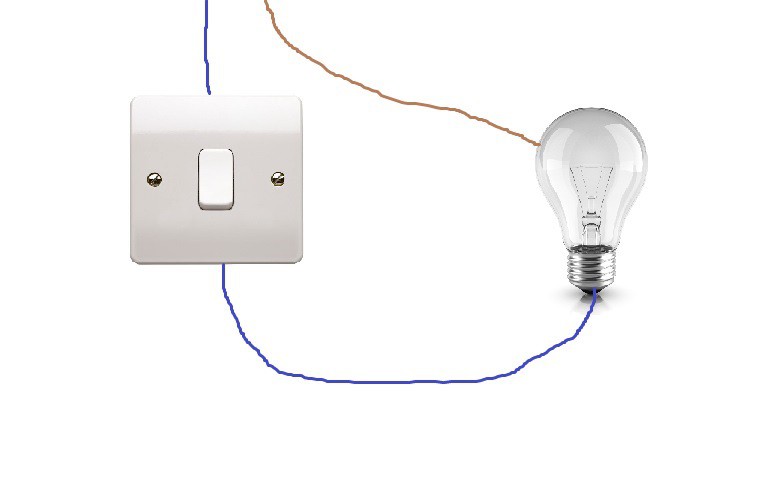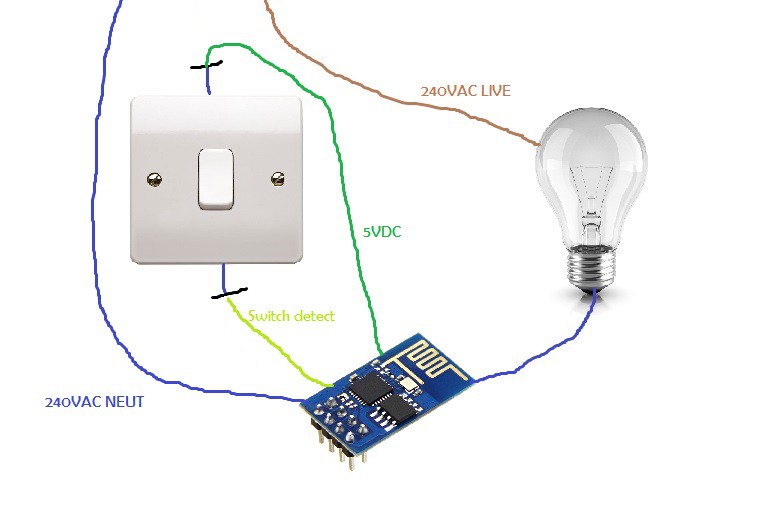I was asked a very pertinent question by [3dscuba].
how do you plan on having the manual switch and the IoT have the same priority? It seems like you either give the manual switch priority or the IoT switch priority?
I gave an answer to his question, but feared that it did not come across very clearly, so I have created some diagrams to help illustrate how I intend for the Theia device to work, I will warn you, they're pretty raw-looking diagrams, and MS paint is the only tool I had to hand at the time - sorry.
How an ordinary light-switch should work

How the Theia device should work
 As you can see, the wall-switch is disconnected from mains voltage, adding an extra layer of safety in case someone like myself were to install it poorly. The switch is instead used by the Theia device (I used a picture of an ESP8266 because I had nothing else to use) as a physical interface. The Theia will detect a change in the switch (on/off) and will switch the relay on and off appropriately.
As you can see, the wall-switch is disconnected from mains voltage, adding an extra layer of safety in case someone like myself were to install it poorly. The switch is instead used by the Theia device (I used a picture of an ESP8266 because I had nothing else to use) as a physical interface. The Theia will detect a change in the switch (on/off) and will switch the relay on and off appropriately.
When the IoT interface gets involved it will invert the state of the wall-switch, i.e. if it is off, the light will turn on, allowing for the wall switch to still be used to turn the light off. I believe that this system may be similar to how a two-way switch works, but correct me if I am wrong.
The mains voltage will be handled by the relay on the Theia which will be "Single Pole Double Throw" to emulate a real light-switch, meaning it can be immediately installed with next no modification to any of the other lighting circuits, meaning anyone can install it themselves at home (within reason).
The Theia will also have a way of detecting whether the light in question is on or not, but I'm still working on that, suggestions are welcomed and very much appreciated.
Discussions
Become a Hackaday.io Member
Create an account to leave a comment. Already have an account? Log In.